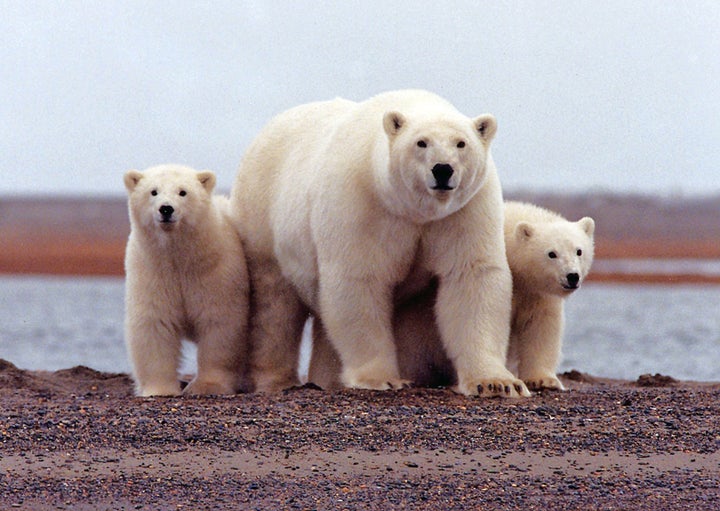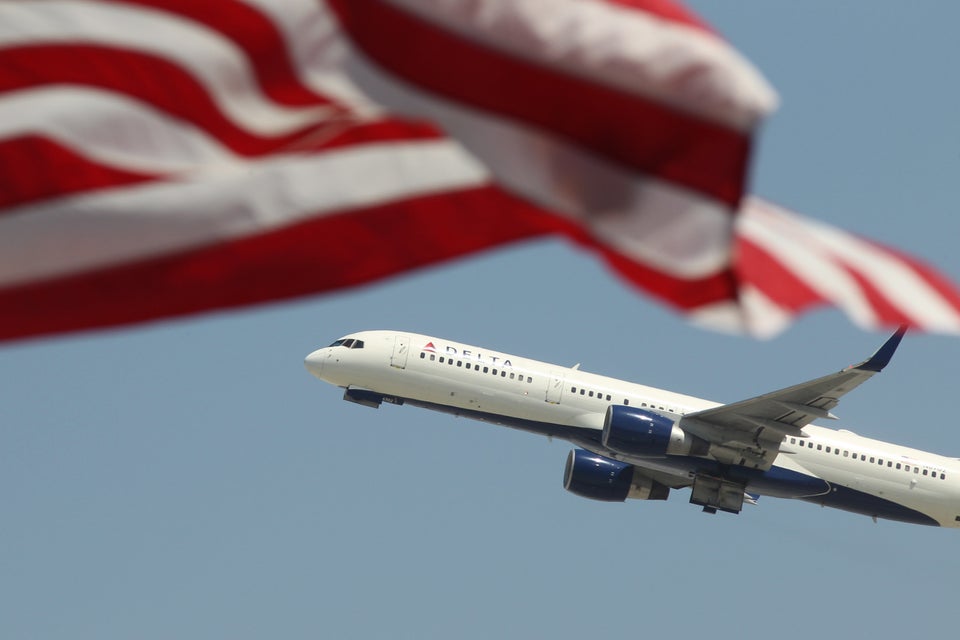
Climate change is melting some polar bears' habitat and forcing them to spend significantly more time on land, a new study has found. The change will likely throw off the Arctic ecosystem and increase the animals' interactions with humans.
The study, published Wednesday in the journal PLOS One, compared the behavior of female polar bears fit with satellite radio collars in the Chukchi Sea region, the area between Russia and Alaska, between the 1986-1995 and 2008-2013 summer months. Only female bears were studied because male bears' necks are wider than their heads, making the collars easy for them to slip off.
Researchers found that there were substantially fewer days of sea ice in the region during the later time period. In the north, ice retreated 20 to 40 days earlier then than it did between 1986 and 1995, while in the south, it retreated as much as 15 days earlier.
Polar bears spend their days on the ice, hunting seals, so the changes meant they had to spend a lot more time on Russia's Wrangel and Herald Islands. The proportion of bears spending more than seven days on land between August and October nearly doubled, from 20 percent in 1986–1995 to 38.9 percent in 2008-2013, with the average amount of time spent on shore increasing by 30 days.
That increased amount of time on land could force the polar bears to prey outside their usual diet, creating serious implications for the Arctic's ecosystem.
"Several studies in areas where bears are coming onshore earlier and spending more time on shore have documented localized but intense nest predation of sea birds and geese," the study notes. "On Wrangel Island, Russia, polar bear predation resulted in the death of at least 226 walruses ... between 1989 and 2006, of which 81% died as a result of stampedes caused by polar bears."
While the researchers didn't witness any nutritional deficiencies in these bears, that might not always be the case. If the population of polar bears relying on these food sources continues to increase, more bears will be competing for the same resources, the scientists said.
And perhaps most immediately alarming is the possibility that polar bears in this region will be driven into more human-populated areas.
"Increases in terrestrial habitat use can lead to increased interactions with humans that may result in safety concerns for humans or in disturbance or death for polar bears," the study notes. "In light of increased human activity in the Arctic, [this] will likely require proactive management to maintain terrestrial habitats for polar bears and mitigate human-polar bear interactions."
While the study only focused on one of the world's 19 polar bear populations, the issue of melting sea ice is a problem across the Arctic.
"The Western Hudson population, home to Churchill’s bears, is now experiencing ice-free seasons that are three to four weeks longer than they were in the 1980s," Barbara Nielsen, director of communications at Polar Bears International, told The Huffington Post earlier this month. "As a result, their numbers have dropped by 22 percent compared with the 1980s."
Also on HuffPost:

